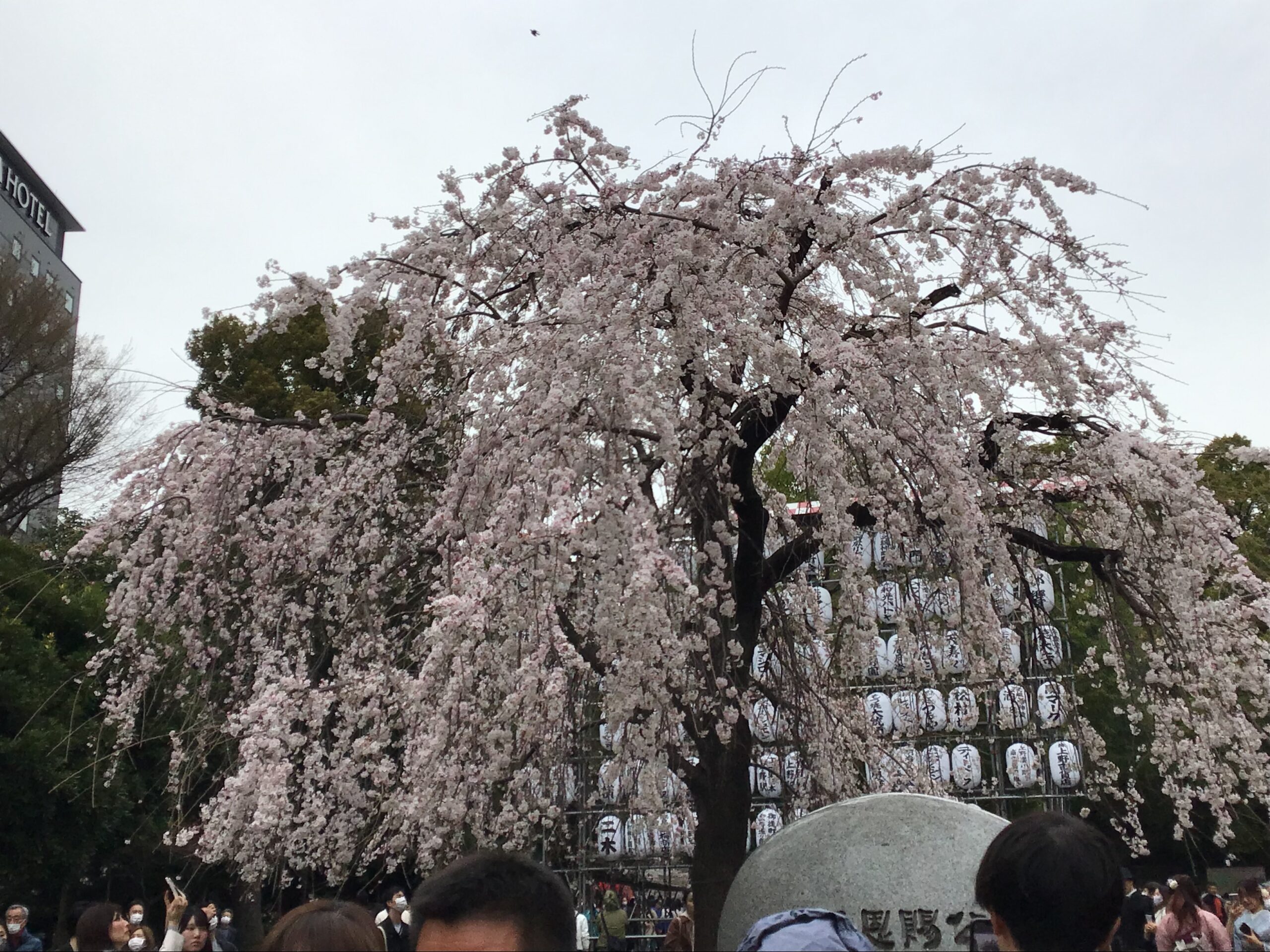This time of the year, Cherry Blossom forecast always appear on news program.
Cherry Blossom Information as of April 4, 2025
Here is the latest cherry blossom map for 2025 (as of April 4). Light pink dots shows where cherry blossom started to bloom and dark pink (fuchsia)dots show where cherry blossom is in full bloom.

Where to look for the latest cherry blossom information?
I often look up at cherry blossom information at tenki.jp https://tenki.jp/sakura/ It’s a Japanese site but you can see a map of Japan here. Please note that the link above take you to the page with two maps. (you can change by click on top of the map.) One on the left is the expected date when cherry blossom start to bloom (開花予想) and the other on right is when the cherry blossom will be full bloom(満開予想). You will see the date such as 4/7(= April 7) or 5/3(=May 3)
Still to come!
Many cities in Kyushu, Shikoku and southern Honshu islands are in full bloom already. According to tenki jp., following are the expected dates for blooming for other cities:
April 5 Niigata, Sendai
April 8 Nagano
April 13 Akita
April 19 Aomori
April 24 Sapporo
May 10 Kushiro (Hokkaido)
The day of opening is defined as the point at which at least five to six flowers have opened on the sample tree. The day of full bloom is when at least 80% of the flowers have opened.
5species of Cherry blossoms
There are over 20 subspecies of Cherry Blossoms. The major speicies are:
1. ソメイヨシノ Somei Yoshino
Somei yoshino (Yoshino cherry) are the most common type of sakura in Japan, and indeed are what many people think of right away when they hear the word ‘sakura’. Blooming before their green leaves even appear, these five-petaled cherry blossoms are almost white, having only the vaguest hint of pink to them. The name somei yoshino comes from a village market that existed during the late Edo era, where it is said that these flowers were first sold.
2. 山桜 Yama Zakura
Yama zakura, or mountain cherry, have quite similar flowers to somei yoshino, having five petals and a very subtle pink hue, but unlike somei yoshino, the leaves of the yama zakura appear at the same time.
This is one of the oldest species of sakura original to Japan, and it is believed that, when reading ancient Japanese poetry, such as in the Manyoshu, these are the sakura to which the waka (*1) refer.
3. 八重桜 Yae Zakura
Yae zakura or double cherry blossoms, are exactly as their name implies: these sakura have between 10 and 50 petals per flower, and come in numerous color variations, ranging from pure whites to vivid pinks. Yae zakura are also known as sato zakura, and are a variant of the Oshima cherry, which grows almost exclusively in the Izu Peninsula.
4. 枝垂桜 Shidare Zakura
With its branches drooping downwards like a willow tree, the shidare zakura is rightly known as the weeping cherry tree in English. There are two main types of shidare zakura, those with five petals, which are closely related to the somei yoshino, and those with more than five petals, which are related to the yae zakura. Either variety come in colors ranging from pale to vivid pinks. This cherry blossom also has the distinction of being Kyoto’s prefectural flower.
5. 御衣黄 Gyoiko
Gyoiko, which translates to ‘yellow imperial garment cherry blossoms’, are scattered throughout Japan, but many people miss seeing these sakura because of their subtle greenish yellow color. There are anywhere from five to ten layers of petals to each blossom. Because of their modest appearance and lack of calling attention to themselves, some believe that these sakura best represent the character of the Japanese.
The Somei Yoshino cherry is typically observed as sample tree for the cherry blossom forecast since, from the late Edo period, it has been planted across the archipelago.



Comments